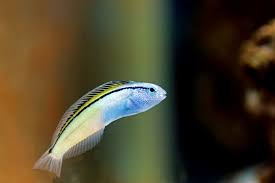
In Chinese culture, the dragon is one of the most revered and symbolic creatures, often associated with power, strength, and good fortune. While its importance spans the entire nation, the dragon holds particular significance in various traditional festivals of different Chinese ethnic groups. Throughout history, the dragon has become a central figure in cultural celebrations, symbolizing prosperity, protection, and unity. From grand dragon dances to dragon boat races, the presence of the dragon in festivals is an enduring and vibrant part of Chinese heritage.
This article explores the profound role of dragons in the traditional festivals of Chinese ethnic groups, highlighting their cultural significance, symbolic meanings, and the diverse ways in which they are celebrated across the country.
1. The Dragon as a Symbol of Power and Prosperity in Chinese Culture
The dragon is traditionally regarded as a divine and auspicious creature in Chinese culture. Unlike its malevolent counterparts in Western mythology, the Chinese dragon is a symbol of benevolence and protection. It is often seen as a protector of the people and the natural world, especially in relation to water and agriculture. In Chinese thought, dragons are believed to control the rain, rivers, and other water sources, which are essential for sustaining crops and ensuring prosperity.
In traditional Chinese festivals, dragons embody the hope for good harvests, strong communities, and favorable fortune. As the symbol of the emperor in ancient China, the dragon was associated with imperial power and authority, representing the might and divine mandate of the ruling class. However, its influence was not restricted to the court; it was also embraced by ordinary people in their various celebrations and cultural practices.
2. The Dragon Dance: A Central Element in Chinese Festivals
One of the most well-known manifestations of the dragon in Chinese festivals is the Dragon Dance. This energetic and visually striking performance is an essential part of many Chinese celebrations, from the Lunar New Year to regional festivals. The Dragon Dance involves a long, serpentine dragon puppet manipulated by a group of dancers using poles. The dragon’s movement is meant to mimic the natural movement of a snake or a river, reflecting the fluidity and grace of the mythical creature.
The Lunar New Year
The Chinese New Year (Spring Festival), the most widely celebrated festival in China, is perhaps the most famous occasion for the Dragon Dance. During this time, dragon and lion dances are performed in streets, temples, and public squares, ushering in the new year with joy, excitement, and prayers for good fortune. The dragon is considered a symbol of vitality and energy, and its dance is believed to drive away evil spirits and attract positive energy for the coming year.
In addition to the traditional dragon dance, there are usually large parades and festivities in which communities display their artistic and cultural heritage, with the dragon dance often at the forefront of the celebrations. For many, the dance is an expression of hope for abundance, prosperity, and happiness in the year ahead.
Regional Dragon Dances
While the dragon dance is a common feature of the Lunar New Year celebrations, different regions in China have their own variations and styles. For instance, in the southern provinces of Guangdong and Fujian, the dragon dance is often performed with large, colorful dragons accompanied by the rhythmic sounds of drums and cymbals. The scale of the performance can vary from small groups to massive displays involving dozens of dancers, creating a captivating and lively spectacle.
In the northern regions, particularly Beijing and Tianjin, the dragon dance tends to be more formal and stylized, with intricate costumes and elaborate choreography. These dances are often performed during temple fairs and traditional ceremonies, where the dragon is believed to bring blessings to the local community and ensure a bountiful harvest.
3. Dragon Boat Festival: A Celebration of Heritage and the Dragon’s Spirit
Another significant festival where the dragon plays a central role is the Dragon Boat Festival (端午节, Duānwǔ Jié), which takes place on the fifth day of the fifth month of the Chinese lunar calendar. This festival, celebrated primarily in southern China, is rich in both cultural and historical meaning, with the dragon boat serving as a symbol of the festival’s spirit of resilience, loyalty, and unity.
Origins of the Dragon Boat Festival
The Dragon Boat Festival traces its origins to ancient Chinese customs and is popularly associated with the commemoration of the poet and statesman Qu Yuan (340–278 BCE), who drowned himself in the Miluo River as an act of protest against political corruption. To honor him and prevent fish from eating his body, locals are said to have rowed their boats in the river and thrown rice into the water.
While Qu Yuan’s story is the most famous explanation for the festival, it also has ties to ancient rituals of protecting the land from evil spirits and ensuring the safety of the people. The dragon boat itself is symbolic of the dragon, a powerful creature that controls water and protects the community. The act of racing dragon boats is viewed as an offering to the river dragon to bring blessings and ward off misfortune.
Dragon Boat Races
During the festival, dragon boat races are held across China and in other regions with Chinese communities, such as Hong Kong, Taiwan, and Southeast Asia. These races involve teams paddling in long, narrow boats adorned with dragon heads and tails. The boats resemble the dragons of ancient mythology, symbolizing strength, courage, and determination.
In these races, the competition is fierce, but it also carries a deep cultural significance. The dragon boat is seen as a vessel that carries the spirit of the dragon, and the race itself is an expression of respect for nature’s forces. By performing the dragon boat race, communities reaffirm their connection to the elements and seek the dragon’s protection.
4. The Dragon and Other Ethnic Celebrations
In addition to the major Han Chinese celebrations, many ethnic minority groups within China also incorporate the dragon into their traditional festivals. These communities have their own unique interpretations of the dragon and its significance, often blending elements of local folklore with Chinese mythological traditions.
The Dragon in Tibetan Festivals
In Tibet, the dragon is often associated with water, fertility, and protection. In Tibetan Buddhist beliefs, the dragon is seen as a guardian of the natural world, particularly water sources such as rivers and lakes. The dragon is revered as a protector of sacred sites, and its image is often featured in Tibetan festivals and rituals.
One such festival is the Shoton Festival, which is celebrated to mark the end of the monastic retreat and the beginning of a new season. During this festival, large dragon-shaped banners are paraded, symbolizing the protective force of the dragon over the land and its people. Tibetan festivals, while centered on Buddhist principles, also draw from the indigenous Bon religion, where dragons are considered to possess spiritual power and can bring prosperity and blessings to the community.
The Dragon in the Miao Ethnic Group
The Miao people, who live in the mountainous regions of southern China, also incorporate the dragon into their traditional festivals. For the Miao, the dragon represents the power of nature, and it is believed to have the ability to influence the weather and protect the land from natural disasters.
One of the most important Miao festivals is the New Year’s Festival, during which dragon dances are performed to bring good luck and protect the community from evil spirits. During this time, the Miao people celebrate their cultural heritage with music, dance, and rituals that honor the dragon as a guardian of their ancestral lands.
5. Modern Interpretations and the Continuing Legacy of the Dragon
In contemporary China, the dragon remains an integral part of traditional celebrations and cultural expressions. The global recognition of Chinese festivals such as the Lunar New Year and Dragon Boat Festival has helped to preserve the dragon’s cultural significance, allowing it to transcend regional boundaries and become a symbol of Chinese identity worldwide.
While the traditional dragon dance and dragon boat races remain popular, modern adaptations and innovations continue to infuse the dragon with new meanings. In urban centers, extravagant dragon floats are featured in parades, and performances are often broadcast worldwide, making the dragon’s symbolism more accessible to global audiences.
Moreover, the dragon continues to be celebrated in popular culture, from movies and television shows to fashion and design. It remains a symbol of unity and strength, deeply connected to the spirit of the Chinese people.
6. Conclusion
Dragons in traditional Chinese festivals represent more than just mythical creatures; they embody the spirit of strength, protection, and prosperity that has shaped Chinese culture for millennia. From the energetic dragon dances of the Lunar New Year to the thrilling dragon boat races of the Dragon Boat Festival, dragons continue to play a central role in cultural celebrations. These festivals, which have been passed down through generations, offer a unique glimpse into the way the dragon has influenced the social, spiritual, and cultural fabric of Chinese society.
Through these vibrant celebrations, the dragon is not only a symbol of historical and mythological significance but also a living testament to the enduring power of tradition and cultural pride. As Chinese festivals evolve, the dragon will undoubtedly continue to be a powerful symbol of unity, strength, and hope for generations to come.









